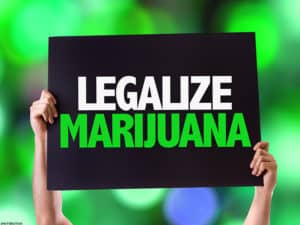
Last week, members of the WESPAC Foundation, Westchester Coalition for Police Reform, and the Drug Policy Alliance released a report highlighting marijuana prohibition enforcement practices in Westchester County and their disparate impact on black and Latino residents.
In a state where these organizations claim that racially biased policing is the norm, Westchester County stands out as one of the most egregious examples of racial disparities. While only 14 percent of the county’s residents are black, black people comprised 52 percent of those arrested for marijuana possession between 2013 and 2017, despite data showing similar rates of use across populations.
Latino people have also been disproportionately impacted, comprising just 17 percent of residents, but 34 percent of arrestees.
The report, “Marijuana Arrests and Enforcement in Westchester County,” shows that marijuana prohibition in Westchester County has largely targeted people of color and that the harms of prohibition – including increased barriers to higher education, housing, and employment opportunities – have been born almost entirely by Westchester’s black and Latino residents.
The disproportionate arrests among black people for low-level marijuana possession holds true regardless of whether communities have a sizable percentage of black residents. Over the past five years, the average arrest rate for black people (182 per 100,000 population) was about nine times that of whites (15) county-wide.
The report also documents how youth in particular are targets of marijuana enforcement in Westchester County. In 2017, 58 percent of people arrested for low-level marijuana possession in Westchester County were 25 years old or younger, and nearly one in three (29 percent) were younger than 20.
Momentum is building for marijuana policy reform in New York State, as advocates across Westchester County are calling for an end to marijuana prohibition and signing on to the Start SMART NY campaign to tax and regulate marijuana. The Marijuana Regulation and Taxation Act, which would legalize marijuana for adult use in New York and reclassify or seal records for prior marijuana arrests, is pending in the State Legislature.
Additionally, the New York State Department of Health recently released its report on the impact of marijuana legalization for the state, concluding that “the pros of a regulated program outweigh the cons.” This newspaper highlighted the State DOH report in our July 27 issue.
Our story, titled “NY Health Dept. Says OK to Legal Pot,” reviewed the findings, which found that for many reasons, and based on factual studies, marijuana should be legalized in New York. The report found that marijuana arrests made in New York and across the country were disproportionally against people of color – and not only in Westchester.
What our story last week did not include is the financial benefit that legalized pot may have in the Empire State. The two financial implications for New Yorkers would be in revenues through taxes and through reduced crime prevention costs.
The report states: “Marijuana regulation could generate long-term cost savings. Legalizing marijuana is anticipated to lead to a reduction in costs associated with illegal marijuana, including police time, court costs, prison costs and administrative fees. There will be costs associated with the implementation of a regulated marijuana program; however, the revenue generated is likely to sustain the program after the first year.
“Regulated marijuana generates tax revenue. Estimates of the size of the current illegal market for marijuana in NYS range from $1.74 billion to $3.5 billion annually, including sales to NYS residents and tourists. The potential size of the NYS marijuana market was projected by combining estimates of the state’s adult residents (age 21 or older) and visitors that use marijuana, the average amount they use annually, and recently reported market prices.”
The U.S. Census Bureau estimates that the state’s population in 2017 was 19.85 million, of which 14.9 million (74.9 percent) are aged 21 or older. Using NYS-specific data on marijuana use as reported in the 2016 National Survey on Drug Use and Health, the proportion of NYS residents who are marijuana users is estimated to be 8.5 percent, resulting in an estimate of approximately 1.27 million NYS residents who are marijuana consumers.
The report also calculates, based on tourist data, that an additional 20,000 marijuana consumers would be visitors and/or tourists.
Fiscal analysis conducted by Washington and Colorado estimates that the average marijuana user consumes five ounces of marijuana per year, while the National Survey on Drug Use and Health estimated that the average marijuana user consumes almost 7.9 ounces of marijuana per year. Both estimates are used in this analysis as a high and low estimate.
The study used an average retail price for an ounce of pot between $270 and $340 based on the quality-potency of the pot sold, and the sale of somewhere between 6.5 million to 10.2 million ounces of marijuana.
The tax rate to be imposed on legal pot in New York would have to be negotiated by the governor, state officials and state legislators. The report found varying tax rates in other states, ranging from 3.75 percent in Massachusetts to 37 percent in Washington State. Currently, New York State taxes medical pot at a 7 percent rate.
A sales tax rate of 8.5 percent could also be added to legal pot, and the sales tax would be split between the state and local governments. A combined 15 percent tax on legal pot in New York appears to be a target, but the report warns to not overtax marijuana. “The Tax Foundation recommends that the tax rate not be so high as to prevent elimination of the illegal market,” it reads.
Total tax revenues annually range between $493 million and $677 million based on the sales price and tax rate. Some of that revenue would be used for public health education purposes, much like the state’s campaigns against the use of tobacco.
Marijuana is currently legal for all residents and visitors in Vermont and Massachusetts. Both states have yet to open pot stores in their states. The impact of marijuana being legal and easy to purchase in both states on New Yorker, and their efforts to legalize pot, is unknown.
Read the state report at health.ny.gov.





